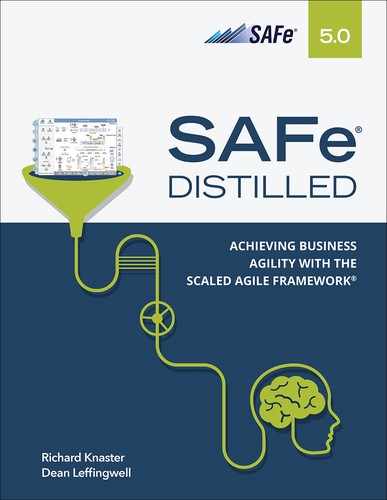16
Measure, Grow, and Accelerate
“Excellent firms don’t believe in excellence—only in constant improvement and constant change.”
—Tom Peters
In the previous chapters of this part of the book, we covered steps 1–11 of the implementation roadmap. In this chapter, we’ll cover the last and most persistent step—step 12: accelerate. However, this final step is not the end. Instead, it’s the start of a new beginning! Now the goal is to accelerate the enterprise’s growth toward business agility.
To reinforce and accelerate the SAFe transformation, leaders must now ‘measure and grow’ the implementation. To do that, they’ll need to maintain the energy and enthusiasm they’re devoting to the short cycles of iterations and Program Increments (PIs) while setting their sights on the larger goals of true business agility.
Organizations that have followed the first 11 steps of the implementation roadmap deserve congratulations! There’s no doubt that substantial progress has occurred; for example:
A sufficiently powerful coalition of change agents is in place.
The majority of stakeholders are trained in Lean-Agile practices.
Leaders are ‘thinking lean’ and ‘embracing agility.’
The portfolio has been reorganized around value streams.
Agile Release Trains (ARTs) have been launched and are continuously delivering value.
The new way of working is becoming the norm for individual teams and those responsible for managing portfolio concerns.
Most importantly, substantial business benefits are accumulating every day. Improvements in quality, productivity, time to market, and employee engagement are meeting or exceeding expectations. The first results of business agility are becoming apparent. It can be tempting to think that the work of transformation is done, since most of the steps in the implementation roadmap have been followed.
However, building on these benefits allows the enterprise to accelerate its business agility journey. This requires a commitment to basic and advanced practices, selfreflection, and retrospection. Here are some activities the enterprise can use to ensure its relentless improvement:
Measure and grow
Reinforce the basics with Essential SAFe
Anchor new behaviors in the culture
Apply learnings across the enterprise
Each of these is described in the following sections.
Measure and Grow
‘Measure and grow’ is the term we use to describe how a portfolio evaluates its progress toward business agility and determines improvement steps. It describes how to measure the current state and grow to improve overall business outcomes. There are two separate assessment mechanisms, which are designed for different audiences and different purposes.
The SAFe business agility assessment is designed for Lean Portfolio Management (LPM), Lean-Agile Center of Excellence (LACE), and other portfolio stakeholders to assess their overall progress toward the ultimate goal of true business agility.
The SAFe core competency assessments are used to help teams and trains improve on the technical and business practices they need to help the portfolio achieve its goals.
Each assessment follows a standard process pattern of running the assessment, analyzing the results, taking action, and celebrating the victories.
SAFe Business Agility Assessment
The SAFe business agility assessment is a high-level assessment that summarizes how Agile the business is at any point in time. The assessment report provides a visualization that shows progress measurements along the 21 dimensions. An example report is shown below in Figure 16-1.
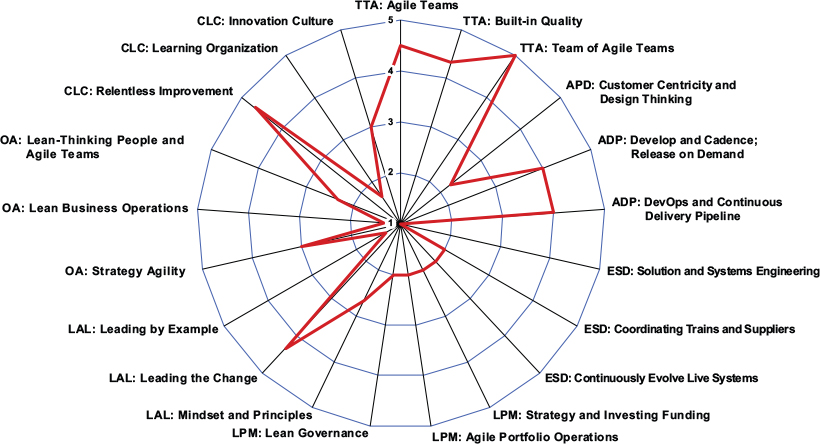
Figure 16-1. Example business agility assessment showing low LPM proficiency
Running the Business Agility Assessment
The business agility assessment contains a series of questions that help identify the current state of the portfolio. Typically, portfolio, business, and technology stakeholders take it, together with the LACE. After choosing the target audience and deciding which competencies the group should assess, it’s essential to set the context before starting the assessment, ensuring that all participants understand the 21 dimensions, as well as the SAFe terminology used.
Assessing business agility progress is not a trivial feat. Opinions abound, the data is lumpy, and the ways of working are evolving at the same time as the assessment is taking place. Therefore, simply sending the assessment out to various participants and asking them to fill in the data will probably not provide the right experience or accurate results. Instead, we recommend a facilitated session with someone trained in the nuances of SAFe and the assessment process. An experienced SAFe Program Consultant is probably a good choice.
Two assessment patterns can be used:
Fill out the assessment individually and then come together to discuss and analyze the results
Work together to discuss each question and reach a consensus on the score
Both patterns have their benefits and disadvantages. Either way, having a facilitator to set the context and answer questions during the assessment is vital. The facilitator also helps ensure that the assessment workshops are engaging and actionable.
Analyzing Business Agility Assessment Results
With the data from the assessment in hand, the next step is to analyze the results. During the analysis, it is important to identify significant variances in opinion. These might stem from a different understanding of the statement itself, or from disagreement about the current state in relation to a specific dimension. The goal is to explore the differences to get better alignment of where improvement is needed. This is a significant part of the collaborative learning experience.
Dimensions that the group has assessed as problematic can then be explored to understand the reasons that drove people to score themselves low. In addition to pointing out areas needing improvement, the assessment allows portfolios to see visible improvements in performance or ‘wins.’ The wins or small milestones, when multiplied, encourage teams to consolidate those gains and produce more change, as Kotter’s model suggests.
The facilitator should also be aware of the Dunning-Kruger effect,1 in which people tend to assess their ability as greater than reality. In turn, dimensions that seem unnaturally high should be reviewed to ensure the group understands the meaning of the statements in question and are being realistic in their assessment.
1. https://en.wikipedia.org/wiki/Dunning%E2%80%93Kruger_effect
Taking Action on the Business Agility Assessment
Although high level, taking the business agility assessment is, in itself, a learning experience. Many questions directly set expectations of behaviors, activities, or outcomes that can be reasoned about and discussed. For example, a question about continuous learning such as “the organization provides dedicated time and space for people to explore and experiment” is fairly clear, and the implied corrective action is fairly obvious. Further in Figure 16-1, the enterprise scored low in LPM. That could be because they are ineffective at it, but it’s more probable that that enterprise hasn’t started that part of the journey yet. In most cases, a quick look at the implementation roadmap will identify some fairly obvious next steps, with the goal being to steadily improve proficiency across all seven core competencies.
The portfolio or the LACE should routinely re-evaluate their progress toward business agility, perhaps every other PI, and plan the next steps. The measurement frequency depends on the opportunities pursued and how fast the portfolio can reasonably achieve progress. Creating a baseline early on in the transformation, followed by periodic assessments, will illustrate improvement trends and allow everyone to communicate successes.
SAFe Core Competency Assessments
In most cases, assessing progress toward business agility spurs the enterprise to greater, and deeper, improvement efforts. That leads the business to explore and start to measure and take more specific action on some or all of the seven core competencies. Structured similarly to the business agility assessment, each core competency assessment has a set of statements, organized by dimension, that are rated on the same scale as the above. The questions go one step deeper to specific aspects and areas of opportunity and concern along each of the three dimensions of that specific competency. An example report is illustrated in Figure 16-2.
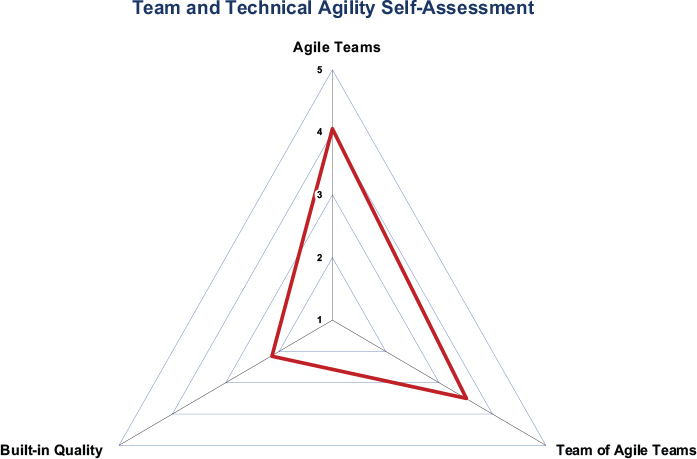
Figure 16-2. A report from a team and technical agility competency assessment
Running a Core Competency Assessment
As with the business agility assessment, the scope, audience, and process for an individual competency assessment must be purpose built. Perhaps low results in the Agile product delivery competency might suggest that each Agile Release Train assess its progress in that dimension. Or perhaps it’s an LPM assessment that needs to bring in the right stakeholders. In any case, all the guidance and caveats provided earlier still apply and attention to culture and careful facilitation is necessary to get the right experience and results.
Each of these more detailed assessments can be downloaded from the bottom of each competency article on the SAFe website.
Analyzing Results of a Core Competency Assessment
The results of a competency assessment are summarized along the three dimensions. But again, there is far more detail in the assessment and far more learnings than the figure alone implies. For example, here’s a sample of questions from the built-in quality dimension, which by themselves inform stakeholders and imply improvement activities:
Teams share responsibility for design
Teams reduce technical debt in each iteration
Teams foster cross-training and T-shaped skills
Continuous integration and automated tests run at team and system levels
To reiterate, taking the business agility or core competency assessment is not a routine, mechanical effort. It’s a facilitated collaborative session filled with learnings, and it sets expectations and communicates intent. Therefore, even the apparently simple act of taking the assessment will be a significant step in moving toward improvement.
Taking Action from a Core Competency Assessment
Based on the analysis of the core competency assessment, the team identifies the areas needing the most improvement. For example, in Figure 16-2, the built-in quality dimension of the team and technical agility competency has a low score, while the other areas appear solid.
Each competency article contains a ‘grows’ link, which opens a page that has recommendations for each dimension (Figure 16-3). The grows represent an activity (e.g., watch a video, run a workshop) that helps the team improve in that dimension.
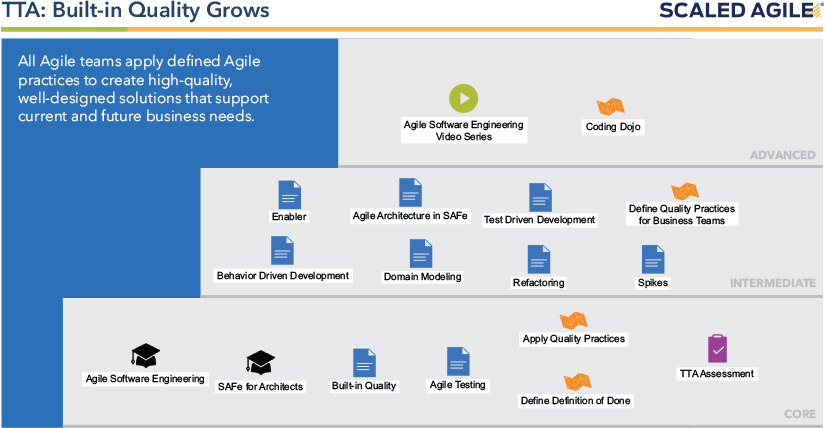
Figure 16-3. Built-in quality grows from the team and technical agility competency
The grows in Figure 16-3 are organized into three groups (core, intermediate, and advanced) to provide a logical order for selecting improvement actions. It’s also helpful to prioritize the opportunities using Weighted Shortest Job First (WSJF) and choose one or two activities to limit work in process and gain the most value in the shortest time. The top, highest priority items go into the appropriate backlog (e.g., LACE, program) based on the size and scope of the improvement.
Celebrate Successes
Lastly, change is hard. Continuous change is harder still. A smart enterprise uses small wins to celebrate progress and inspire people to achieve the next milestone. There are many opportunities to celebrate: such as when a portfolio, ART, or team move from one level to the next in each dimension; or perhaps even manage to change a single assessment statement from ‘mostly false’ to ‘mostly true.’ Celebrating successes creates the fuel needed for more improvement and advancement on the journey toward business agility.
These milestones can also provide an opportunity for organizations to gamify the process. This, in turn, can motivate individuals and teams to intensify their focus on the activities that will help them and their portfolio to achieve goals.
In addition, tying the improvement to changes in the value stream KPIs and other busness metrics connects the effort to the portfolio’s measures of success. This way, the entire portfolio can focus on results and celebrate growth and positive outcomes.
Reinforce the Basics with Essential SAFe
The business agility and individual competency assessments provide a comprehensive framework to help the enterprise ‘measure and grow.’ But there’s often an intermediate path as well. In virtually every sport, when teams start to struggle, coaches will refocus their players on the fundamentals of their positions. This first step on the path back to winning is also often the same for organizations adopting SAFe.
At the beginning of the transformation, everyone was trained, and the initial emphasis was on learning the fundamentals of SAFe. However, as more trains are launched and the organization’s attention moves to new challenges, steps in the implementation roadmap may be skipped. Practices that were closely followed in the beginning may have been altered or discontinued. Whether it’s lack of understanding, a desire to shortcut the path to agility, or the natural ebb and flow of a company’s attention to performance, often one or more of the ten critical success factors in Essential SAFe (Figure 16-4) is not being followed.
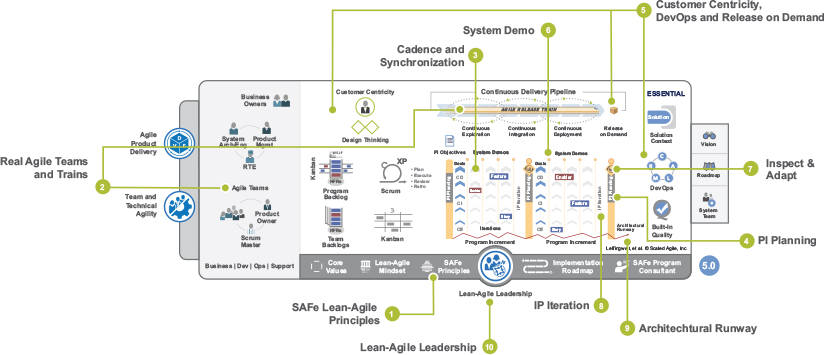
Figure 16-4. The ten critical success factors of Essential SAFe
Experience from thousands of SAFe implementations has shown that skipping any factor will lead to the portfolio achieving less than exemplary results. To overcome these challenges, the following ten critical success factors (Figure 16-4) are a subset of Essential SAFe that describe the basics necessary to achieve positive business outcomes.
Each of these elements is described next.
1. Lean-Agile Principles
SAFe practices are grounded in fundamental Lean-Agile principles. As organizations adopt SAFe, their continuous improvement activities find even better ways of working. These principles guide those efforts and ensure that adjustments are moving on a steady path to the ‘shortest sustainable lead time, with the best quality and value to people and society.’
2. Real Agile Teams and Trains
Real Agile teams and ARTs are fully cross-functional. They have everything, and everyone, necessary to produce working, tested increments of the solution. Self-organizing and self-managing, they flow value more quickly, with a minimum of overhead. Agile teams that cannot define, build, test, and deliver their work are not fully functional Agile teams. ARTs that cannot deliver solutions or parts of them are not fully capable ARTs.
3. Cadence and Synchronization
As described in Principle #7, cadence provides a rhythmic pattern—a steady heartbeat for the development process. It makes routine those things that can be routine. Synchronization allows multiple perspectives to be understood and resolved at the same time. For example, synchronization is used to pull the various assets of a system together to assess solution-level viability.
4. PI Planning
No event is more powerful in SAFe than PI planning. It provides the rhythm for the ART and connects strategy to execution by ensuring business and technology alignment. Aligning the entire ART to a common vision and goal creates energy and a shared sense of purpose.
5. Customer Centricity, DevOps, and Release on Demand
SAFe enterprises create a positive customer experience across their full set of products and services. They adopt a DevOps mindset, culture, and applicable technical practices to enable more frequent and higher-quality releases whenever the market demands. Customer centric, they apply design thinking to their work. These practices provide faster validation of hypotheses and produce greater profits, increased employee engagement, and more satisfied customers.
6. System Demo
The primary measure of the ART’s progress is the objective evidence from a working solution in the system demo. Every two weeks, the full system—the integrated work of all teams on the train for that iteration—is demoed to the train’s stakeholders. Stake-holders then provide the feedback the train needs to take corrective action and stay on course. This replaces other forms of governance that create additional work and impede flow.
7. Inspect and Adapt
Inspect and Adapt (I&A) is a significant event held every PI and is a predetermined time to reflect, collect data, and solve problems. The I&A event assembles teams and stakeholders to assess the solution and define the improvements and actions needed to increase the velocity, quality, and reliability of the next PI.
8. Innovation and Planning (IP) Iteration
The IP iteration serves multiple purposes. It acts as an estimating buffer for meeting PI objectives and provides dedicated time for innovation, continuing education, PI planning, and I&A. IP iteration activities support many Lean-Agile principles that enable business agility.
9. Architectural Runway
The architectural runway consists of the existing code, components, and technical infrastructure necessary to implement high-priority, near-term features, without excessive delay and redesign. Insufficient investment in the architectural runway slows the train and makes the ART’s delivery less predictable.
10. Lean-Agile Leadership
For SAFe to be effective, the enterprise’s leaders and managers take responsibility for Lean-Agile adoption and success. Executives and managers become Lean-Agile leaders trained in—and then become trainers of—these Leaner ways of thinking and operating. Without leadership taking responsibility for the implementation, the transformation will be unlikely to achieve the full benefits.
Anchor New Behaviors in the Culture
Implementing SAFe and achieving mastery of the seven competencies will inevitably shift the culture of the organization. Anchoring this shift to make it permanent is critical to ensuring that the organization keeps progressing and doesn’t regress to old patterns of behavior. As portfolios advance toward higher degrees of mastery, there will be a natural tendency to assume that the new way of working has become habit and to shift the focus of the organization to the ‘next big thing.’
But beware. Until all of the new principles and practices spread throughout the entire portfolio become the default way of working, there will be an ongoing risk that some or all of the organization’s gains will be lost. The portfolio could easily revert to legacy mindsets and practices. Changes in leadership, threats that create an emergency response environment, or the organization not having enough time and experience for the new habits to take root are all possible causes.
So, how can this pitfall be avoided?
Once again, the wisdom of W. Edwards Deming points the way. “Transformation is not automatic. It must be learned; it must be led.” Leaders must do more than ‘change the system.’ Leaders have to understand the principles and practices of change leadership and organizational change management. They must become curators, caretakers, and defenders of the new way of working. When the heat is on and the pressure to revert to old habits escalates, everyone will look to leaders from the top of the organization down to see how they respond. Has leadership transformed how it thinks, acts, and makes decisions—even in moments of crisis? When leaders demonstrate that real change has occurred and going backward is not an option, no matter the circumstances, the changes become part of the organization’s DNA. Then, the new way of working is likely to withstand similar challenges in the future.
Many of these new behaviors are modeled and exemplified by two specialty roles: the Scrum Master and the RTE. It takes a combination of coaching, experience, and training to develop them.
Advance Scrum Master Servant Leadership
Scrum Masters are servant leaders and coaches for an Agile team. They help educate the team in Scrum, XP, Kanban, and SAFe built-in quality practices. They also help remove impediments and foster an environment for high-performing team dynamics, continuous flow, and relentless improvement. Consequently, Scrum Masters play a critical role in the adoption of SAFe.
After a Scrum Master has been in the role for a while, at least three to five PIs, it’s time for them to apply advanced learning to their experience to solve the next level of problems.
The SAFe Advanced Scrum Master course prepares current Scrum Masters for their leadership role in facilitating Agile team, program, and enterprise success in SAFe implementation.
The course covers facilitation of cross-team interactions in support of ART execution and relentless improvement. It enhances the Scrum paradigm with an introduction to scalable engineering and DevOps practices, the application of Kanban to facilitate the flow of value, and supporting interactions with System Architects, Product Management, and other critical stakeholders in the larger enterprise context. The course also offers actionable tools for building high-performing teams and explores practical ways of addressing Agile and Scrum anti-patterns in the enterprise.
Advance Agile Release Train Servant Leadership
The RTE is a servant leader and coach for the entire ART. Their major responsibilities are to facilitate the ART events and processes and assist the teams in delivering value. RTEs communicate and interact with everyone on the ART, including executives, Business Owners, and many other stakeholders to escalate impediments, help manage risk, and drive relentless improvement to deliver value. It’s an incredibly difficult and important role. RTEs are vital to the success of the entire ART and therefore are critical to the adoption of SAFe. It’s typical for an RTE to be informally trained and coached by an experienced SPC. After an RTE has conducted at least three to five PIs, it’s important that they can spend time to advance their skills and knowledge by learning with other similar or more experienced people.
The SAFe Release Train Engineer course helps RTEs learn how to build a high-performing ART by becoming a true servant leader and coach through experiential learning and examining the RTE role in a Lean-Agile transformation with other peers. Moreover, RTEs will learn advanced tech-niques for facilitating ART processes and execution; coach leaders, teams, and Scrum Masters in new processes and mindsets; and be the primary enabler of alignment throughout all levels of a SAFe enterprise. Although the course can be valuable for people new to the role, this course relies on train-ing from the back-of-the room techniques where the majority of the learning comes from the experiences of the other course participants.
Apply Learnings Across the Enterprise
It’s common for the world’s largest organizations to have many portfolios. However, success in one portfolio does not ensure success in the others. As the initial portfolio adopting SAFe progresses toward business agility, the next step of accelerate is to leverage the insights and successes of the pioneering organization to transform the remaining portfolios. The recommended pattern is to provide change agents from the initial portfolio with the opportunity to help transform future portfolios, bringing with them all of the experience and understanding of implementing SAFe. For this pattern to succeed, organizations need to invest in cultivating the next generation of leaders in every role so they are prepared to step in when their counterparts move on to launch the transformation in other portfolios. Planned well, these transitions can be smooth and can create great opportunity and upward mobility for these leaders. They can also assure that the existing portfolio continues making progress toward the never-ending journey of mastering business agility.
Summary
Although it might appear so in the implementation roadmap, the accelerate step of SAFe is not the last in the transformation journey. Rather, it’s the beginning of a new and larger journey of relentless improvement.
The emerging Lean enterprise has started to build a new operating model. Persistent progress is becoming the norm, but it can’t be taken for granted. Accelerating the transformation requires continuous retrospection and identification of opportunities for improvement. The business agility and core competency assessments provide a means to measure this progress and identify areas for growth. In addition to the ten critical ART success factors, specific ‘grows’ provide activities to increase proficiency in each core competency. Over time, the new behaviors that emerge will become anchored in a new organizational culture, thereby creating the opportunity to spread learnings wider across the enterprise.
Taken together, the ‘accelerate step’ and the ‘measure and grow’ guidance provide a comprehensive strategy that will help the enterprise achieve the full business benefits of a SAFe implementation.
